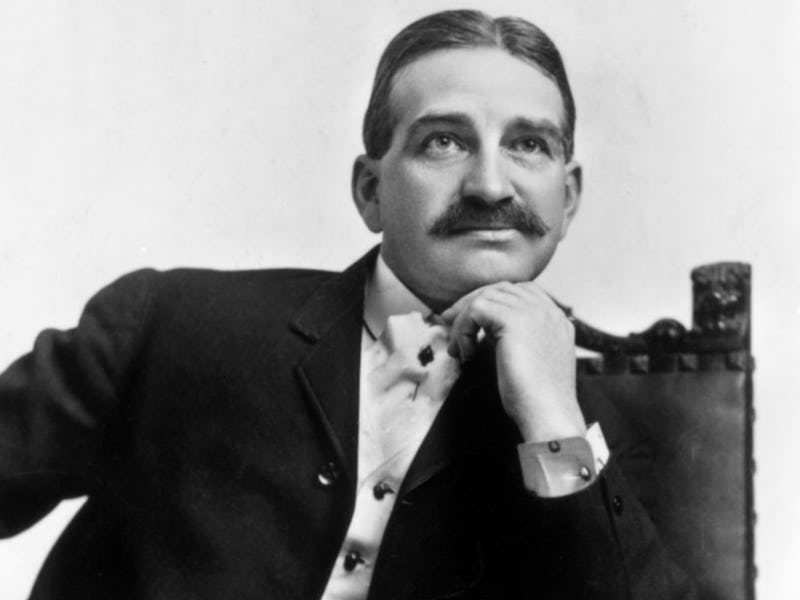Did L. Frank Baum Predict Augmented Reality or Warn Us About Its Power?
What's that on your forehead?

Lyman “L.” Frank Baum was the author of The Wizard of Oz, numerous other Oz installations, and scores of other books and story collections. He was also an amateur futurist, a writer who once remarked that “Imagination transforms the commonplace into the great and creates the new out of the old.” And, one-hundred and fifteen years ago, he predicted the rise of augmented reality. Did he know that the technology would be initially popularized by Pokémon GO? He did not. But what he envisioned in his novel The Master Key isn’t that far off — and may still be an accurate description of what is yet to come.
With Pokémon GO, augmented reality apps have at last broken through to the mainstream. This breakthrough is occurring in parallel to the rise of gamified citizenship apps and big-data driven crowdsourced feedback loops, like those employed by Uber. Will these two technological tracks inevitably merge? Baum thought so.
Nice spectacles, Mr. Baum
Still, Baum’s vision of AR tech remains slightly futuristic. When The Master Key’s protagonist, a boy named Rob, accidentally spawns the Demon of Electricity (just go with it), the entity promises to reward him with three gifts each week for three weeks. In the second week, the demon gives him the “Character Marker,” a unique pair of spectacles. The demon explains to Rob what they do:
“While you wear them every one [sic] you meet will be marked upon the forehead with a letter indicating his or her character. The good will bear the letter ‘G,’ the evil the letter ‘E.’ The wise will be marked with a ‘W’ and the foolish with an ‘F.’ The kind will show a ‘K’ upon their foreheads and the cruel a letter ‘C.’ Thus you may determine by a single look the true natures of all those you encounter.”
Rob then asks the demon for more information. The demon tells him that, indeed, these qualities are all electrical in nature. “Goodness, wisdom and kindness are natural forces, creating character,” he explains. “For this reason men are not always to blame for bad character, as they acquire it unconsciously. All character sends out certain electrical vibrations, which these spectacles concentrate in their lenses and exhibit to the gaze of their wearer, as I have explained.”
While science has yet to — and likely won’t — prove the existence of these “natural forces,” the technology to build a Character Marker exists. Take Pokémon GO, merge it with China’s Sesame Credit, and you have a vaguely nationalist, deeply dystopian version of Baum’s invention. We become capable of seeing each other not only for what we are, but for what we are in the context of society and the various metrics of goodness determined in a different room.
The problem here is subjectivity or the arbitrariness of prioritizing certain metrics over others. The demon may be a demon, but he gives Rob an objective tool, one that discerns a person’s inherent goodness or lack thereof. He’s not judging people as consumers, employees, or citizens. The criteria are clear.
Since what Baum imagined has yet to come about, and, therefore, we don’t have a way to determine a person’s genuine goodness or badness, we’re stuck with subjectivity. And people are quite unreliable when it comes to making such judgments. For ride-share drivers, it’s a simple matter: in effect, the question is just, did the person do his or her job? For human beings, doing their best to please everyone, questions of goodness are both numerous and far more complex. And true, objective answers are either forever elusive or reserved to the weird entities we haven’t yet learned to summon.
In one sense, Baum predicted the creation of augmented reality. In another, he warned us what might happen next.